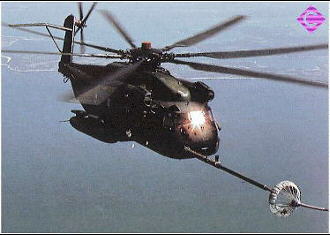Thursday
September 19, 2000
CV-22 flight testing set to begin at Edwards Air Force Base
PATUXENT RIVER, Maryland, USA ( US Naval Air Systems Command Press release ) - The arrival of the first CV-22 Osprey on Sept. 18 at Edwards Air Force Base, Calif. ushers in a new era in aviation for the Air Force and US Special Operations Command (SOCOM).
The new CV-22 aircraft flew today from the Bell Helicopter Flight Research Center Arlington, Texas, where it was converted from a MV-22 to a CV-22, to its new home at Edwards. The conversion began last June at the Bell facility where two MV-22 aircraft were reconfigured with CV-22 production wiring and CV-22-unique systems such as a multi-mode radar for terrain following/terrain avoidance, auxiliary fuel tanks, and an integrated electronic warfare suite.
"The arrival of this aircraft means combined developmental and operational testing for the SOCOM's number one acquisition priority," said USAF Lt. Col. Jim Shaffer, CV-22 Multi-service Operational test director. "This aircraft is the first revolution in aviation to hit Edwards since the breaking of the sound barrier. There have been lots of airplanes and helicopters tested here, but they all have one thing in common, they are all evolutionary continuations of a concept. Tiltrotor is a revolutionary step in national capability being developed and evaluated for the warfighter CV-22 Integrated Test Team at Edwards."
For the next two years, the CV-22 Integrated Test Team, comprised of USAF, US Marine Corps, Bell Boeing, and Raytheon personnel, will take the aircraft through a rigorous flight test program that will culminate in Operational Test & Evaluation in Aug. 2002. Beginning immediately, the aircraft will enter testing of its electronic warfare suite in the anechoic chamber facility and then follow on with the risk reduction flight test program. The other CV-22 is scheduled to join the flight test program at Edwards at the end of September.
The newest addition to the SOCOM aviation arsenal was unveiled on July 25 in a roll-out ceremony held at the Bell Helicopter Textron facility in Arlington, Texas, where Lt. Gen. Norton Schwartz, USAF deputy commander in chief, US Special Operations Command, emphasized the importance of this new weapon system. "Having the CV-22 means having significant advantage over the maneuver capabilities of potential future adversaries. The CV-22 fills a long-standing USSOCOM and Air Force requirement to conduct long range insertion and extraction missions in one period of darkness. We have always been able to insert but not until now, to reliably extract at long range."
Now this is possible because the CV-22's Suite of Integrated Radio Frequency
Countermeasures includes an active radar jammer. This equipment can geo-locate threats
using its missile warning receivers, as well as incorporate real-time intelligence from a
multi-mission advanced tactical terminal. This is accessible to the pilot on a digital map.
The CV-22 also has a Directed Infrared Countermeasures system, which includes an active infrared jammer. Other CV items include a survivor locator system, additional radios and upgraded computers.
The Air Force is acquiring 50 CV-22 Ospreys to replace its fleet of
MH-53J Pave Low
 helicopters used to insert and extract special operations forces from hostile areas. Procurement of the first production CV-22s is scheduled to begin in 2001 with deliveries in 2003 and an initial operational capability expected in 2004. The first four production aircraft will go to the 58th Training Squadron at Kirtland where they will be used for CV-22 advanced aircrew training.
The CV-22 Osprey is a tiltrotor aircraft that combines the vertical takeoff, hover, and vertical landing qualities of a helicopter with the long-range, fuel efficiency and speed characteristics of a turboprop aircraft. It takes off vertically and, once airborne, the nacelles (engine and prop-rotor group) on each wing can rotate into a forward position. The Osprey can cruise at 230 knots, and has a two times greater speed, range and payload than the MH-53J. According to program officials, it is also hands down the most survivable aircraft in production in the Department of Defense rotary wing inventory.
helicopters used to insert and extract special operations forces from hostile areas. Procurement of the first production CV-22s is scheduled to begin in 2001 with deliveries in 2003 and an initial operational capability expected in 2004. The first four production aircraft will go to the 58th Training Squadron at Kirtland where they will be used for CV-22 advanced aircrew training.
The CV-22 Osprey is a tiltrotor aircraft that combines the vertical takeoff, hover, and vertical landing qualities of a helicopter with the long-range, fuel efficiency and speed characteristics of a turboprop aircraft. It takes off vertically and, once airborne, the nacelles (engine and prop-rotor group) on each wing can rotate into a forward position. The Osprey can cruise at 230 knots, and has a two times greater speed, range and payload than the MH-53J. According to program officials, it is also hands down the most survivable aircraft in production in the Department of Defense rotary wing inventory.
V-22 Osprey page
Bell timeline
Boeing timeline
